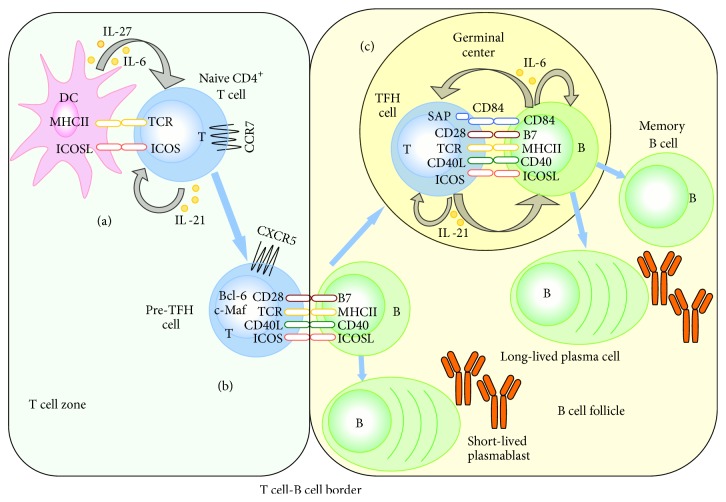Figure 2.
Multiple signals and steps for the generation of TFH cells. (a) Naive CD4+ T cells are activated when they encounter antigen presented cells-dendritic cells within T cell zone, and then these T cells move towards B cell follicles. (b) At the T cell-B cell border, activated T cells become pre-TFH cells, first interacting with cognate activated B cells, promoting either the differentiation of B cells into short-lived extrafollicular plasmablasts or the migration of B cells into follicles. (c) In germinal center, pre-TFH cells become GC TFH cells and provide help for B cell differentiation into plasma cells and memory B cells as well as antibody production. Cross-talk between TFH cells and cognate B cells involves a series of costimulatory molecules and cytokines, which are important for the function of TFH cells. Reciprocal signals provided by B cells are indispensable to sustain TFH cells. Bcl-6, B cell lymphoma 6; CCR7, CC-chemokine receptor 7; CD40L, CD40 ligand; CXCR5, CXC-chemokine receptor 5; DC, dendritic cell; ICOS, inducible costimulator; ICOS, ICOS ligand; IL-6, interleukin 6; IL-21, interleukin 21; IL-27, interleukin 27; MHC-II, major histocompatibility complex II; SAP, signaling lymphocytic activation molecule associated protein; TCR, T cell receptor.

